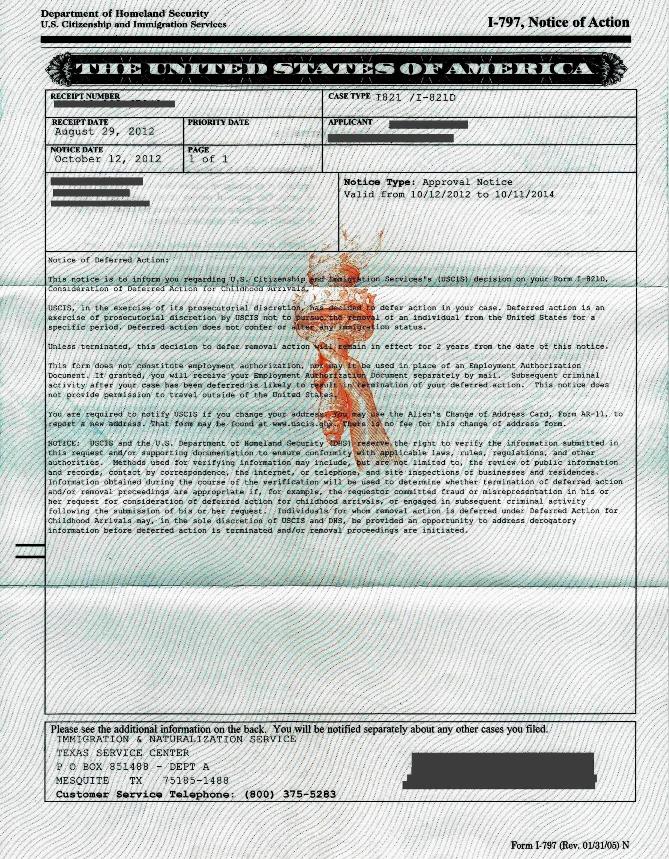Mon Feb 15, 2016 by Anil Kalhan
DAPA, “Lawful Presence,” and the Illusion of a Problem (Yale Journal on Regulation Notice & Comment)
 In an essay published earlier this week, Prof. Michael Kagan expresses concern that “one aspect†of the Obama administration’s executive actions on immigration might be vulnerable when the Supreme Court adjudicates United States v. Texas later this year. In particular, Kagan worries that the plaintiffs might “have a valid point†when they assert that the administration’s initiatives—Deferred Action for Parents of Americans and Lawful Permanent Residents and its predecessor, Deferred Action for Childhood Arrivals—improperly purport “to make lawful something that Congress has made unlawful.†Kagan’s concern rests principally—and possibly in its entirety—on a stray line in the memorandum issued by Homeland Security Secretary Jeh Johnson to establish DAPA and expand DACA, which states that “deferred action … means that, for a specified period of time, an individual is permitted to be lawfully present in the United States†(emphasis added).
In an essay published earlier this week, Prof. Michael Kagan expresses concern that “one aspect†of the Obama administration’s executive actions on immigration might be vulnerable when the Supreme Court adjudicates United States v. Texas later this year. In particular, Kagan worries that the plaintiffs might “have a valid point†when they assert that the administration’s initiatives—Deferred Action for Parents of Americans and Lawful Permanent Residents and its predecessor, Deferred Action for Childhood Arrivals—improperly purport “to make lawful something that Congress has made unlawful.†Kagan’s concern rests principally—and possibly in its entirety—on a stray line in the memorandum issued by Homeland Security Secretary Jeh Johnson to establish DAPA and expand DACA, which states that “deferred action … means that, for a specified period of time, an individual is permitted to be lawfully present in the United States†(emphasis added).
Kagan is likely correct in predicting that the plaintiffs’ assertions about “lawful presence†may become a focal point now that the Supreme Court has granted certiorari. In both his initial May 2015 opinion denying the government’s motion for a stay pending appeal (as I discussed here) and his subsequent November 2015 opinion affirming the district court’s preliminary injunction, U.S. Circuit Judge Jerry Smith went out of his way to characterize DAPA and DACA as affirmatively conferring their recipients with “lawful presence.†In their brief in opposition to certiorari, the plaintiffs have now followed his lead. Read superficially and in isolation, the sentence that Kagan highlights might seem to support that characterization. (By contrast, the memorandum establishing DACA issued by Johnson’s predecessor, Janet Napolitano, makes no reference to “lawful presence†or “unlawful presence†at all.)
Ultimately, however, describing DAPA and DACA as entailing a grant of “lawful presence†mischaracterizes those initiatives, relying upon a misunderstanding of both the structure and content of immigration law and the manner in which undocumented immigrants are recognized and constructed as legal subjects. Moreover, in order to characterize DAPA and DACA as something other than guidance structuring the exercise of enforcement discretion, as permitted by existing law, both Judge Smith and the plaintiffs fashion a unitary but entirely mistaken conception of “lawful presence†itself—one that constitutes an aggregated, intertwined package of benefits, in a manner that approximates conventional understandings of lawful immigration “statusâ€â€”that has no actual legal basis. Kagan’s attention to the plaintiffs’ claim about “lawful presence†is amply warranted, and he is correct in suggesting that the government may have contributed to these misunderstandings. Nevertheless, there is only the illusion of a substantive problem here, because as a matter of law, “unlawful presence†simply does not carry the meaning that Judge Smith, the plaintiffs, and (possibly) Kagan himself ascribe to it.
Continue reading at Yale Journal on Regulation Notice & Comment….